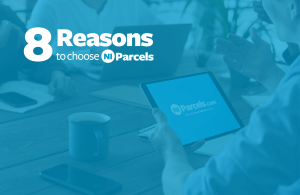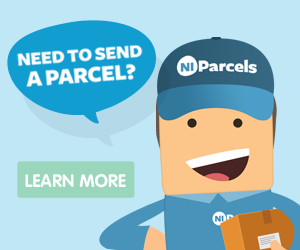
When we think about e-commerce, our minds tend to turn immediately towards B2C brands, that is, the selling of goods to everyday consumers. However, selling your goods or services to other businesses online can also be very lucrative.
The problem is e-commerce B2B businesses models can feel a lot more overwhelming than B2C models with tried and tested methods.
But there is good news if you’re considering starting up a B2B e-commerce venture or moving your existing B2B business online. The more you learn, prepare and take action, the more successful your B2B initiatives will be.
Below, we’re going to take you through the B2B e-commerce model and some common misconceptions, as well as discussing whether B2B e-commerce is right for your business (spoiler – it probably is!).
What is B2B e-commerce?
B2B stands for business to business; therefore, B2B e-commerce models are those which provide goods or services to other businesses through online sales channels.
Because this centres around the supplying of goods or services from one enterprise to another, product prices tend to be a lot more flexible, and order volumes can be much larger depending on your offering.
Not only this, but since it’s businesses buying from one another, B2B e-commerce transactions are usually more logical, need-based and are far less impulsive than those made by individual consumers.
Some examples of well-recognised B2B e-commerce businesses include Amazon, Alibaba, Salesforce, Hootsuite and Microsoft.
The key benefits of setting up a B2B e-commerce store
There are a number of reasons why selling through B2B e-commerce can be very advantageous, and the key benefits for both you and your customers include:
- Being able to offer better customer service, as well as improved efficiency and productivity
- Opening your business up to a much wider customer base
- Increasing your brand awareness
- The ability to grow and scale up the business easily to meet market demand and customer needs
- Access to more data and analytics than ever before, making it easier to assess the effectiveness of marketing strategies, sales effectiveness, product mix, etc.
- The possibility to increase your sales engagement with customers
- Providing an omnichannel sales and communication experience to your customers
But despite these many benefits, some brands are still reluctant or worried about embracing this business model – and this is often down to a number of misconceptions.
What are some common misconceptions about B2B e-commerce?
Whether already running a business or considering getting started, there are some common misconceptions that hold lots of people back from selling B2B online; these are believing:
- That the traditional B2B method is absolutely fine as it is and needs no updating
- B2B customers don’t want to buy things online; they all want to speak with a sales rep in person or over the phone before purchasing
- B2B pricing is too complex for an e-commerce website
- Good customer service and business interaction don’t translate well online
- B2B products are not suitable for online sales
- E-commerce sites can’t comprehend more complicated payment methods such as monthly instalments
- B2B websites don’t need to be fancy or cleverly designed
- E-commerce sites are costly and take up a lot of your precious time
Of course, none of this is correct. In today’s digital world, as Millennials and younger generations are increasingly in decision-making roles, more and more people prefer to buy goods and services for their business online.
Not only this, but B2B e-commerce does not have to be costly, labour-intensive or complicated. There are plenty of tools and platforms out there that make creating and maintaining a well-designed, engaging website quick and easy.
What features and capabilities should a B2B e-commerce site have?
If you’re ready to get your e-commerce site set up, you might be wondering how to get started and what key features your website is going to need. The good news is there are certain features and capabilities that every good B2B e-commerce site should have, so tick these boxes, and you’ll be on the path to success:
Customer accounts
Firstly, you need to make sure your clients can buy goods, monitor orders and reorder as quickly and simply as possible. It’s a good idea to allow customers to create an account they can log into and quickly reorder or access past orders.
This should include solo and multiple user accounts, and you could even allow them to set up permissions and user authority levels for making purchases.
Order and pricing features
Where required, it’s important to indicate minimum and maximum order quantities, as well as fixed price lists or volume-based discounts.
If you don’t offer fixed prices and instead offer tailored packages, ensure that contacting the relevant sales reps is as simple and easy as possible, pop up chat windows can be very helpful for this.
Payment options
Flexible payment options and portals such as buy now, pay later (BNPL) are great for customers as they offer them a range of ways to pay. As such, it’s a good idea to offer a variety of portals and ways to pay, carefully displaying all options on your e-commerce site.
Courier and shipping options
As well as offering different payment options, it’s a good idea to offer a range of different shipping options. This can be particularly important for businesses who need swift deliveries or special courier services for heavier, larger or more fragile goods.
Administrative features
These features should also benefit the business by synchronising orders, inventory and client profiles with the administrative office. Your site should also integrate helpful business systems such as bulk pricing, quote management and inventory handling.
Data and privacy
Finally, you need to make sure that you follow all data privacy and other cybersecurity protocols to keep your business and customers safe. Remember, when using your website, businesses will be sharing a lot of sensitive information with you, and this needs to be protected.
So should you be selling B2B through e-commerce?
For the most part, yes, you should be selling B2B through e-commerce. That being said, depending on your goods or services, there will always be some exceptions, and ultimately you need to determine this for yourself.
However, as we move further into a digital world, consumers and businesses are increasingly looking for quick, simple and more efficient ways to get the goods and services they need.
Not to mention e-commerce opens you up to a much bigger audience, which is so important in today’s competitive market.





